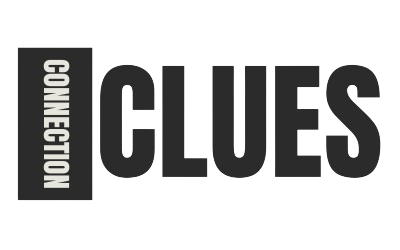Time is one of the most valuable resources we have, yet many people struggle with time management. Whether you’re an entrepreneur, a student, or a busy professional, knowing how to effectively use your available time can help you increase productivity, reduce stress, and achieve a better work-life balance.
The key to success isn’t having more time—it’s learning how to prioritize, plan, and make the most of the time available.
In this guide, you’ll learn:
- What “time available” means and why it matters
How to analyze and optimize your time
Best time management techniques for work and personal life
How to eliminate distractions and stay focused
Practical strategies to improve time efficiency
Let’s explore how to take control of your time and maximize productivity!
What Does “Time Available” Mean?
The phrase “time available” refers to the amount of free or allocated time you have in a given period to complete tasks, meet deadlines, or engage in activities.
- Work-Related Time – Hours spent on professional tasks, meetings, and deadlines.
Personal Time – Free time for hobbies, relaxation, and social activities.
Unplanned Time – Unexpected gaps due to cancellations, waiting periods, or delays.
Understanding your available time helps you plan effectively and avoid last-minute stress.
How to Analyze Your Available Time
Before improving time management, you must first understand how your time is spent.
Step 1: Track Your Daily Activities
- Use a time-tracking app (Toggl, RescueTime) or a manual time log to monitor tasks.
- Write down how much time you spend on emails, meetings, commuting, and breaks.
- Identify time-wasting activities (social media scrolling, excessive meetings).
Step 2: Identify Time Wasters
- Ask yourself:
Do I spend too much time on unproductive tasks?
Am I multitasking too much?
Are distractions (emails, notifications) reducing my efficiency?
Step 3: Categorize Your Time
- Fixed Tasks: Non-negotiable commitments (work meetings, family time).
- Flexible Tasks: Tasks that can be scheduled at different times (email responses, creative work).
- Discretionary Time: Free time for personal growth and relaxation.
Tip: Creating a clear overview of your available time allows better scheduling and efficiency.
Best Time Management Techniques to Maximize Available Time
The Eisenhower Matrix (Prioritization Method)
Categorize tasks into:
| Urgency | Importance | Action |
| Urgent & Important | High Priority | Do immediately |
| Not Urgent but Important | Medium Priority | Schedule for later |
| Urgent but Not Important | Low Priority | Delegate to others |
| Not Urgent & Not Important | No Priority | Eliminate |
Example: Answering urgent client emails is high priority, while watching random YouTube videos is low priority.
The Pomodoro Technique (Work in Focused Sprints)
- Work for 25 minutes on a task.
- Take a 5-minute break.
- Repeat this cycle 4 times, then take a longer break (15-30 minutes).
Tip: This technique improves focus and prevents burnout.
Time Blocking (Schedule Your Day Efficiently)
- Allocate specific time slots for tasks.
- Block email-checking, meetings, and deep work separately.
Example: Reserve 9 AM – 11 AM for high-priority tasks, 2 PM – 3 PM for meetings, and 6 PM – 8 PM for personal activities.
The 80/20 Rule (Pareto Principle)
- 80% of results come from 20% of efforts.
- Focus on high-impact tasks that drive the best outcomes.
Example: If 20% of your clients bring 80% of your revenue, prioritize them!
Batching Similar Tasks
- Group similar tasks together to reduce mental switching time.
- Example: Respond to emails in one session instead of throughout the day.
How to Reduce Time-Wasting Activities
- Avoid Distractions – Turn off notifications while working.
Limit Social Media Use – Use apps like Forest or Freedom to block distractions.
Say No More Often – Decline unnecessary meetings and commitments.
Automate Repetitive Tasks – Use email templates, scheduling tools, and AI assistants.
Tip: Small daily time savings add up to hours of free time every week!
How to Use Your Free Time Wisely
- Invest in Personal Growth – Read, take online courses, or develop new skills.
Exercise & Stay Healthy – Use breaks for short walks or fitness activities.
Plan & Reflect – Use weekly planning to review progress and set goals.
Spend Time with Loved Ones – Strengthen relationships with quality time.
Tip: The way you use your available time defines your long-term success and happiness.
Conclusion
Effectively managing your available time is the key to higher productivity, less stress, and a balanced life. By tracking time, eliminating distractions, prioritizing tasks, and using proven time management techniques, you can achieve more while maintaining a work-life balance.
Key Takeaways:
- Analyze your available time using time-tracking tools.
Use prioritization techniques (Eisenhower Matrix, Pomodoro, Time Blocking).
Reduce distractions & automate repetitive tasks.
Make time for personal growth, relaxation, and meaningful activities.
Want to take control of your time? Start implementing these strategies today!
FAQs
1. How can I determine how much available time I have?
Track your daily activities using a time log or app to see where your time goes.
2. What is the best way to prioritize my tasks?
Use the Eisenhower Matrix to focus on urgent and important tasks first.
3. How do I avoid wasting time on unproductive activities?
Set time limits for social media and distractions, and use focus techniques like Pomodoro.
4. What’s the best time management method for busy professionals?
Time blocking & batching are great for scheduling focused work sessions.
5. How can I create more free time in my day?
Automate tasks, delegate low-value work, and eliminate unnecessary commitments.
Also read: Can You Get Fired for a No Call No Show? Understanding Workplace Policies & Consequences









